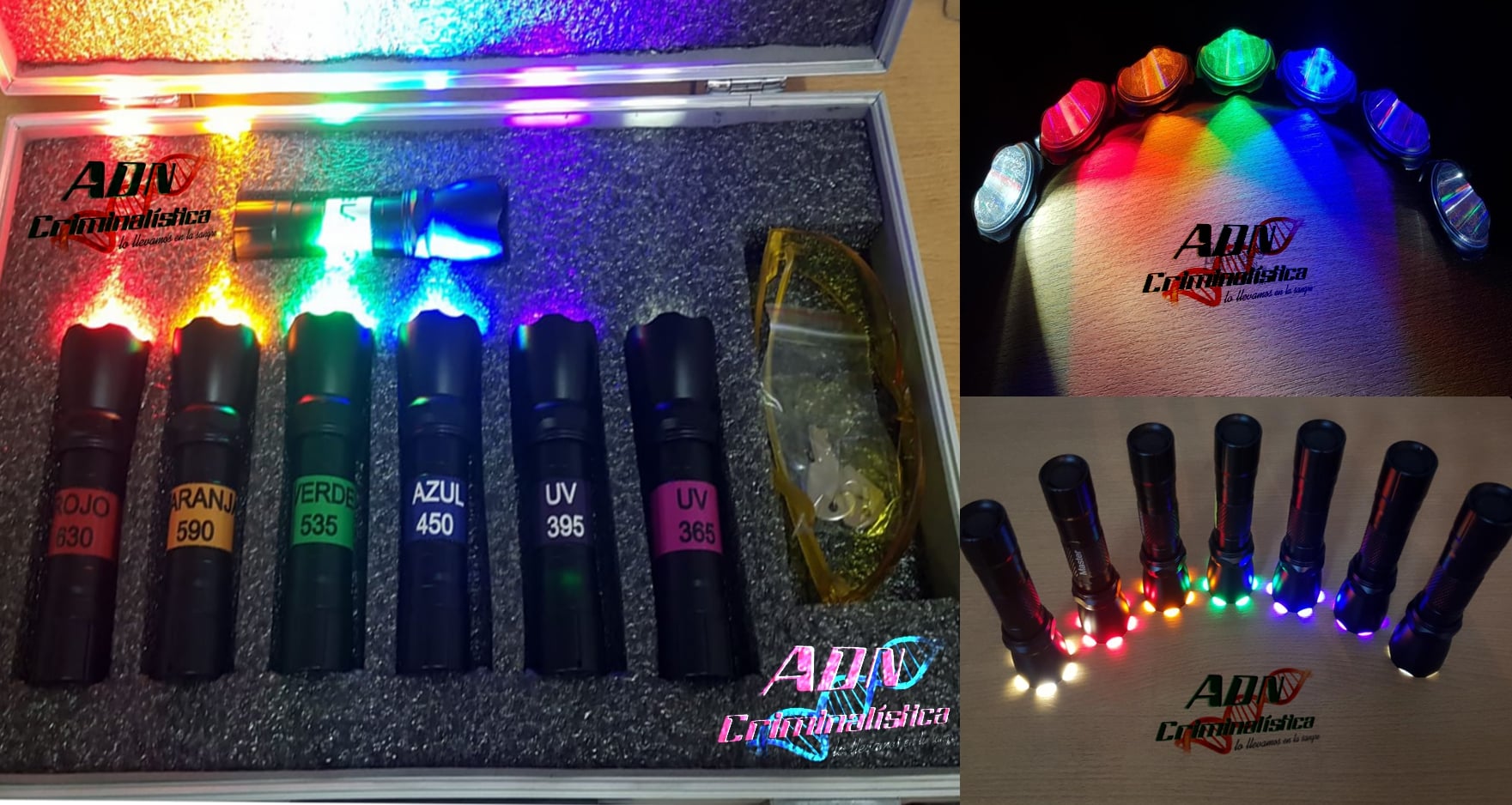The light sources of different wavelengths are used in the field of criminalistics for locating items of forensic interest during inspection of a scene from the fact. This is a very effective method that does not alter the test samples, allowing suspect the presence of biological materials such as body fluids (sangre, semen, urine, etc.), pelos, bones and teeth; and non-biological, as gunshot residue and synthetic fibers, among other potential physical evidence.

Alternative light sources may also be applied in other forensic fields, as in documentología, allowing identification document security measures and maneuvers adulterativas.
El briefcase full forensic DNA lights Forensic will allow positive identification, both the crime scene and in the laboratory, elements from their interaction with light sources alternative.

Some possible applications has each of the flashlights of the set are:
White light 6000K
- Inspection and lighting field in general.
- Identification of bloodstains, bruises and bites.
- Detection shoeprints.
Red light (630 nm)
- Document analysis and determination of falsifications and adulterations.
- Hair analysis and latent prints treated with ninhydrin.

Orange light (590 nm)
- Analysis of samples with fluorescent contrasting backgrounds.
- Fiber identification.
- Latent analysis untreated or treated with ninhydrin.
Green light (535 nm)
- Identification of latent prints untreated
- Analysis of latent prints developed with fluorescent powders and ninidhrina.
- Fiber identification, bones, teeth and accelerants.

Blue light (450 nm)
- Gunshot residue detection
- Document analysis, bones, teeth and body fluids
- Revealed traces display with yellow and red magnetic developer.
- Identification of bloodstains, fibers, hair and accelerants.

Violet light (395 nm)
- Analysis of bruises and bite marks
- Viewing latent prints developed with Ardrox
- Identification of some drug residues
- Detection of blood on dark surfaces and other body fluids; fiber and hair
- Analysis of documents and printing systems.
UV light (365 nm)*
- Analysis of bruises and bite marks.
- Viewing latent prints developed with fluorescent developer Ardrox.
- Identification of some drug residues.
- Detection of blood on dark surfaces, semen and other body fluids.
- Document analysis and document security measures.
*The case includes goggles UV.

Purchase the briefcase full forensic lights here.

